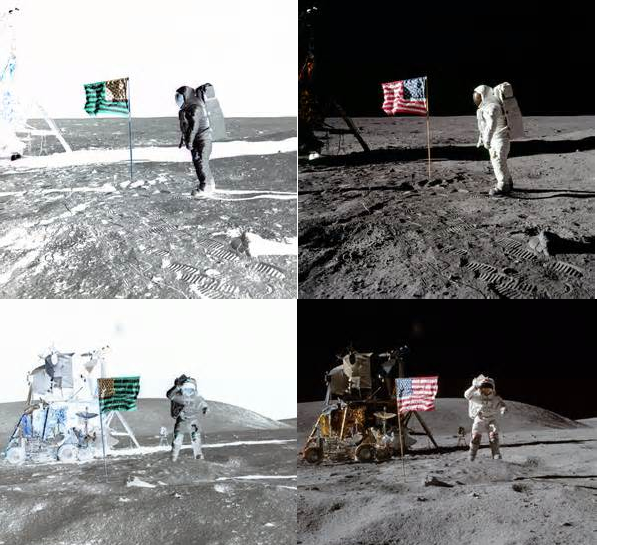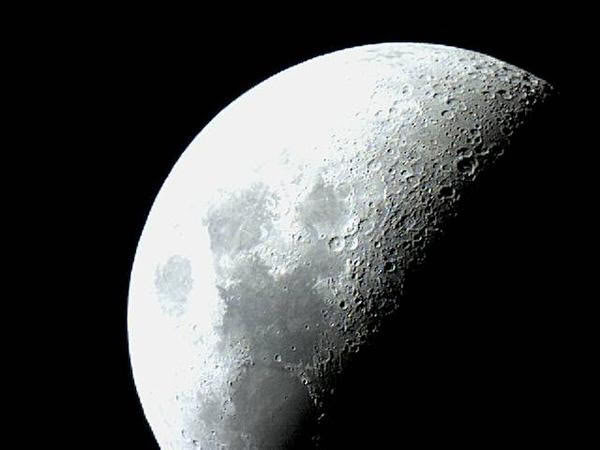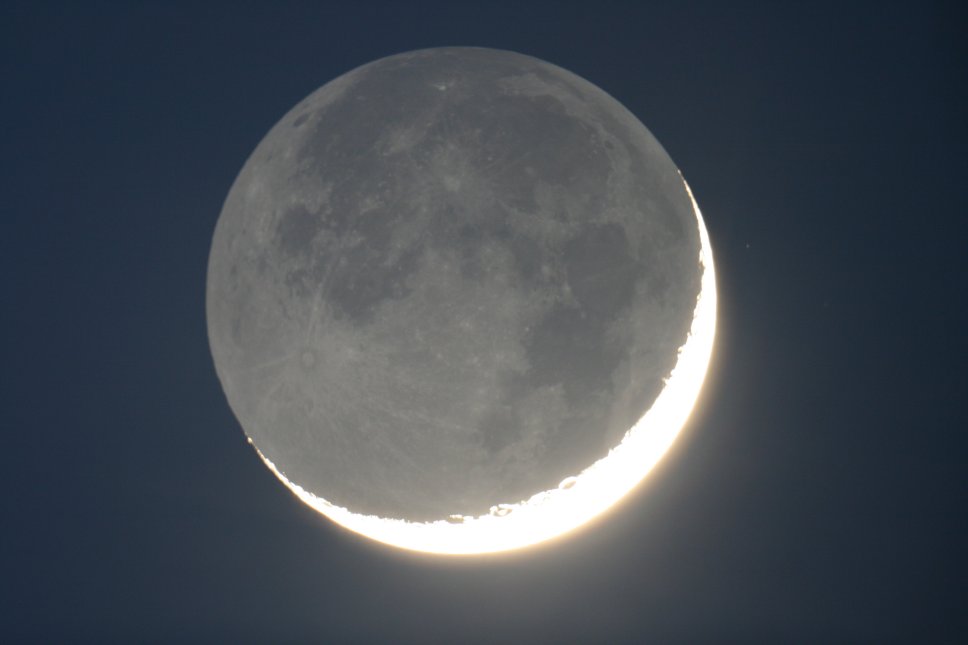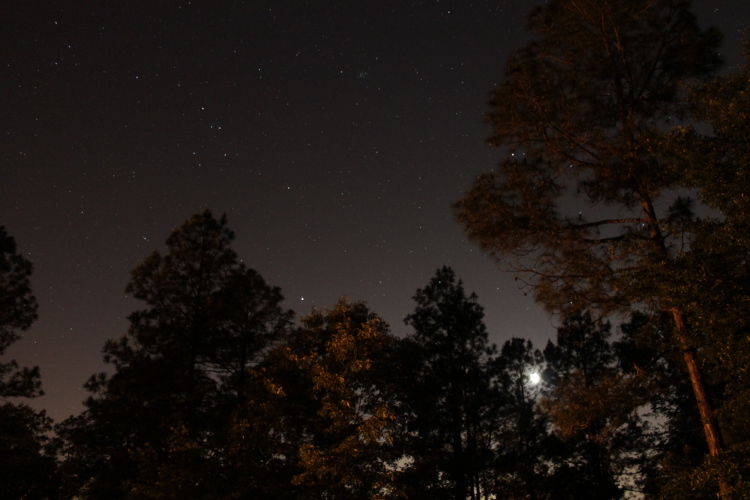It looks like you're using an Ad Blocker.
Please white-list or disable AboveTopSecret.com in your ad-blocking tool.
Thank you.
Some features of ATS will be disabled while you continue to use an ad-blocker.
3
share:
Is it a conspiracy, or fact?
goes.gsfc.nasa.gov...
Well, the obvious similarity is that both edit the sky.
Zoom in on the image. What's the difference?
NOAA's "enhancement" leaves rough edges on the Earth and puts some fake stars around.
NASA's "enhancement" has no rough edges and disappears with the stars altogether.
goes.gsfc.nasa.gov...
Well, the obvious similarity is that both edit the sky.
Zoom in on the image. What's the difference?
NOAA's "enhancement" leaves rough edges on the Earth and puts some fake stars around.
NASA's "enhancement" has no rough edges and disappears with the stars altogether.
Are you sure the "sky" is edited? A camera trained on the earths daylight side with all that cloud cover would most certainly have to use a very
high shutter speed if the detail in the bright areas is to be maintained. At such a high shutter speed the fainter light of stars would not have time
to register on the film/sensor.
so because two different Photoshop dept at two different places have a differing opinion on an aesthetic choice in "enhancement" theirs a
conspiracy?
I am not sure if you are aware, but there is probably not a single digital image for public distribution that has not been touched up in Photoshop.
Things like specs on the lens, or dead pixels on the camera, etc.
I am not sure if you are aware, but there is probably not a single digital image for public distribution that has not been touched up in Photoshop.
Things like specs on the lens, or dead pixels on the camera, etc.
Originally posted by minkmouse
Are you sure the "sky" is edited? A camera trained on the earths daylight side with all that cloud cover would most certainly have to use a very high shutter speed if the detail in the bright areas is to be maintained. At such a high shutter speed the fainter light of stars would not have time to register on the film/sensor.
Cloud cover ? The edited parts are outside the atmosphere.
Originally posted by benrl
so because two different Photoshop dept at two different places have a differing opinion on an aesthetic choice in "enhancement" theirs a conspiracy?
I am not sure if you are aware, but there is probably not a single digital image for public distribution that has not been touched up in Photoshop.
Things like specs on the lens, or dead pixels on the camera, etc.
Well, it certainly proves two different Photoshop departments were involved in editing the first photo from this satellite, which are a lot of departments to be involved.
Also I don't think aesthetic choice is the issue here. Do we have an unedited photo? That might please our eyes...
reply to post by SomeoneWatching
Yep I agree, many pictures they offer seem rather fishy to me ....
www.abovetopsecret.com...
Yep I agree, many pictures they offer seem rather fishy to me ....

www.abovetopsecret.com...
reply to post by SomeoneWatching
That's what I'm saying, are you sure they're edited and not a result of the photographic process?
That's what I'm saying, are you sure they're edited and not a result of the photographic process?
Originally posted by soulpowertothendegree
reply to post by SomeoneWatching
Yep I agree, many pictures they offer seem rather fishy to me ....
www.abovetopsecret.com...
Ahaha damn NASA what are they thinking. Those images are sooooo shooped. I mean look. It's really white on the left hand side. And they expect us to believe that is the moon???
Even I can shop better than that, using mspaint on a 286.
and I'm really bad at it.
aaaaand...
lets think for a moment, they've never denied they touch up photographs. They've never denied that some images are in fact separate hues and combined later into a colour image.
You ask, OP, conspiracy or fact. It's pretty much already accepted as fact, as far as I was aware.
ps. my skills with mspaint on a 286 as described above were for illustration purposes only and do not reflect the legitimacy of the claim that the photos presented are dodgy. Just in case.
Originally posted by soulpowertothendegree
reply to post by winofiend
Look at the bottom picture...where is the shadow for the astronaut?
There isnt one. A spot light in the warehouse where it was taken is obviously burned out.
Darn Union workers!
reply to post by soulpowertothendegree
Exactly where it should be....

Sorry....
Look at the bottom picture...where is the shadow for the astronaut?
Exactly where it should be....

Sorry....
reply to post by SomeoneWatching
They are two different images. The bottom one is a couple of hours after the first one.
How can I tell? Simple:
Take a look at the top image, look just below Cuba, and notice the bright spot. The sun is causing that.
Now take a look at the bottom image. Notice how the bright spot has moved to the left. Means the Earth has rotated and time has passed.
Because time has passed, clouds have moved. Take a look at the tropical areas, like Florida or Central America. Notice how the clouds looks small, popcorn like, then in the bottom image, they've grown. That's what pop up thunderstorms do, and is indicative of time passing.
So comparing the images really makes no sense to me as they were taken at two different times and are not the same picture.
They are two different images. The bottom one is a couple of hours after the first one.
How can I tell? Simple:
Take a look at the top image, look just below Cuba, and notice the bright spot. The sun is causing that.
Now take a look at the bottom image. Notice how the bright spot has moved to the left. Means the Earth has rotated and time has passed.
Because time has passed, clouds have moved. Take a look at the tropical areas, like Florida or Central America. Notice how the clouds looks small, popcorn like, then in the bottom image, they've grown. That's what pop up thunderstorms do, and is indicative of time passing.
So comparing the images really makes no sense to me as they were taken at two different times and are not the same picture.
I still don't understand why they black out the sky. Is it just to hide all the satellites?
Originally posted by SomeoneWatching
I still don't understand why they black out the sky. Is it just to hide all the satellites?
You do realize that the way cameras work is to expose film or a CCD chip for a certain amount of time, yes? sometimes that time is short, like a day time picture the shutter could be 1/250 of a second. High speed cameras are taking shots much, much faster than that.
Stars, satellites and distant planets light is very faint and takes shutter speeds that are a lot longer. Whole seconds to minutes in some cases.
Light reflecting off the moon's surface or the surface of the Earth is very bright. Camera speeds are fast when taking pictures of them.
Here's a picture I took of the moon through my telescope. Shutter speed was about 1/125:

As you can see, even at a shutter speed of 1/125 seconds the sunlit side of the moon is over exposed. Notice that you are not seeing any stars in the picture. It's because it's too quick to capture any stars.
Now take a look at this picture also taken by me:

Shutter speed was around 1/50. That's the dark side of the moon being lit up by earthshine (like how the full moon lights up our nights). Slower speed and captured fainter light, but still no stars.
Here we go, I have stars in my picture. I took it and opened the shutter for 12 seconds. Now you can see stars. And look at the moon. It's so totally over exposed it looks like a spot light and you can not see any of it's features:

Pictures of the Earth taken from space and pictures taken on the moon in the daylight suffer the same limits: If you want to see it, it all comes down to shutter speed. Not air. Has nothing to do with air at all.
If satellites taking pictures of the Earth were to see stars, they would have to increase the shutter speed and that would over expose the image of the earth. It would end up looking like a white ball of light.
Same goes for images taken on the moon: to see the stars, they would have had to open up the shutters for several seconds and that would have washed out anything else in the picture due to the sun light reflecting off the moon's surface.
reply to post by SomeoneWatching
All I can see is the NASA enhancement has the contrast turned up a little to bring out the details more. This would also work to obscure the stars shown in the NOAA enhancement.
All I can see is the NASA enhancement has the contrast turned up a little to bring out the details more. This would also work to obscure the stars shown in the NOAA enhancement.
new topics
-
Is the origin for the Eye of Horus the pineal gland?
General Conspiracies: 43 minutes ago -
Man sets himself on fire outside Donald Trump trial
Mainstream News: 54 minutes ago -
Biden says little kids flip him the bird all the time.
2024 Elections: 1 hours ago -
The Democrats Take Control the House - Look what happened while you were sleeping
US Political Madness: 1 hours ago -
Sheetz facing racial discrimination lawsuit for considering criminal history in hiring
Social Issues and Civil Unrest: 1 hours ago -
In an Historic First, In N Out Burger Permanently Closes a Location
Mainstream News: 3 hours ago -
MH370 Again....
Disaster Conspiracies: 4 hours ago -
Are you ready for the return of Jesus Christ? Have you been cleansed by His blood?
Religion, Faith, And Theology: 6 hours ago -
Chronological time line of open source information
History: 7 hours ago -
A man of the people
Diseases and Pandemics: 8 hours ago
top topics
-
Israeli Missile Strikes in Iran, Explosions in Syria + Iraq
World War Three: 17 hours ago, 19 flags -
In an Historic First, In N Out Burger Permanently Closes a Location
Mainstream News: 3 hours ago, 14 flags -
Thousands Of Young Ukrainian Men Trying To Flee The Country To Avoid Conscription And The War
Other Current Events: 14 hours ago, 7 flags -
The Democrats Take Control the House - Look what happened while you were sleeping
US Political Madness: 1 hours ago, 7 flags -
Iran launches Retalliation Strike 4.18.24
World War Three: 17 hours ago, 6 flags -
12 jurors selected in Trump criminal trial
US Political Madness: 16 hours ago, 4 flags -
4 plans of US elites to defeat Russia
New World Order: 10 hours ago, 4 flags -
A man of the people
Diseases and Pandemics: 8 hours ago, 4 flags -
Man sets himself on fire outside Donald Trump trial
Mainstream News: 54 minutes ago, 4 flags -
Biden says little kids flip him the bird all the time.
2024 Elections: 1 hours ago, 3 flags
active topics
-
Silent Moments --In Memory of Beloved Member TDDA
Short Stories • 46 • : Encia22 -
Man sets himself on fire outside Donald Trump trial
Mainstream News • 8 • : BernnieJGato -
12 jurors selected in Trump criminal trial
US Political Madness • 73 • : ImagoDei -
The Democrats Take Control the House - Look what happened while you were sleeping
US Political Madness • 15 • : matafuchs -
Are you ready for the return of Jesus Christ? Have you been cleansed by His blood?
Religion, Faith, And Theology • 17 • : TheValeyard -
Israeli Missile Strikes in Iran, Explosions in Syria + Iraq
World War Three • 100 • : Astrocometus -
Biden says little kids flip him the bird all the time.
2024 Elections • 5 • : TheValeyard -
President BIDEN Warned IRAN Not to Attack ISRAEL - Iran Responded with a Military Attack on Israel.
World War Three • 46 • : ImagoDei -
Thousands Of Young Ukrainian Men Trying To Flee The Country To Avoid Conscription And The War
Other Current Events • 24 • : DerBeobachter2 -
"We're All Hamas" Heard at Columbia University Protests
Social Issues and Civil Unrest • 131 • : marg6043
3
